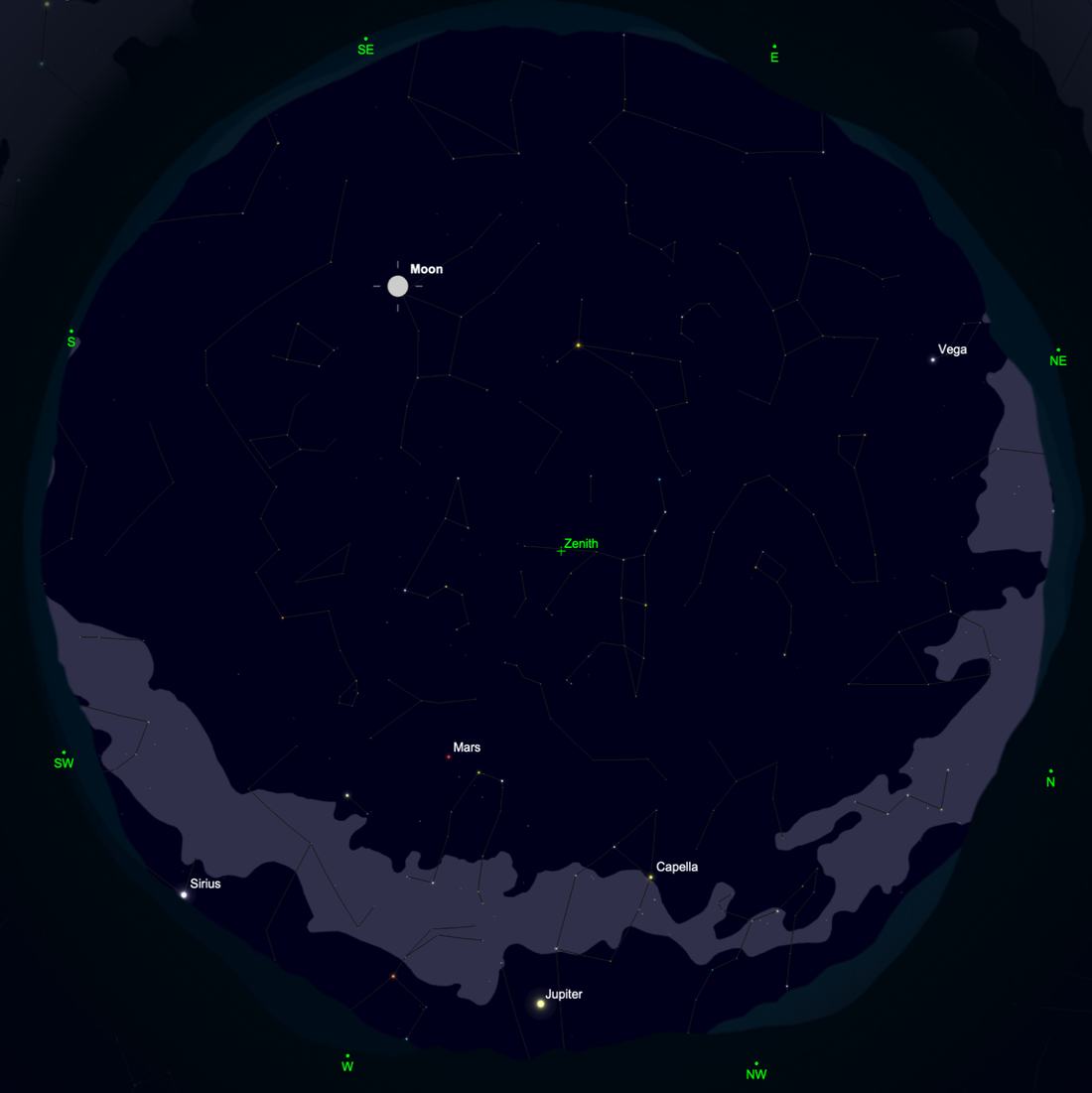
The Shape of the Milky Way at a Glance
Share
By Phil Plait
Every night, I take our dogs out one last time before going to bed. Like every other time I’m out after sunset, I took a moment to look up and see what there was to see in the sky. Facing roughly east, I was surprised to spot only a couple of bright stars even though I knew the sky was clear. Arcturus was obvious enough, and Spica was visible through the trees. Other than that, not much.
That gave me momentary pause; just a few nights ago I had seen quite a few bright stars! Then I remembered: on that other night I was facing southwest. So I turned, and sure enough I could easily spot well over a dozen stars.
I laughed at myself. For a second there I forgot we live in a spiral galaxy.
People unfamiliar with the sky might think the stars are scattered pretty evenly throughout, like dust in the air. But they’re not… well, depending on what kind of star you mean.
The Milky Way Galaxy is a flat disk roughly 120,000 light-years across and a few thousand light-years thick. The Sun is about 26,000 light-years from the center and very close to the mid-plane of the disk (right on the galaxy’s equator, if you like).
That’s the main reason we don’t see stars distributed evenly across the sky. When we look towards the plane of the galaxy, our line of sight extends a long way into the disk, where there are lots of stars. When we look up or down out of the galaxy, perpendicular to the plane, that line of sight reaches the “edge” of the galaxy much closer to us, so we don’t see as many (in reality the galaxy doesn’t have a sharp edge, but there are fewer with distance similar to how Earth’s air gets thinner with height).
Actually, it’s a little more complicated than this. For example, obviously, stars are fainter the farther away they are from us. The Sun dims to invisibility at a distance of only 50 or 60 light-years, yet the galaxy extends much farther than that, even if we look out of the plane. So why do we see fewer stars in those directions?
It’s because we mostly just see luminous stars. If we could see every single star, then yes, we’d see lots of stars in every direction. But most stars are much less luminous than the Sun, and we can’t see them even when they’re relatively close.
The only kinds of stars we can see at distances greater than roughly 100 light-years are powerful O, B, and A stars, or stars that are starting to die and have become red giants or supergiants.
Those luminous O, B, and A stars are massive and don’t live long, which means they don’t have time to move far from their stellar nurseries before they die. Stars like that are born in gas and dust clouds that exist close to the galactic midplane, so we tend to see these stars when we look into the plane. Check Starry Night: the glow of the Milky Way that we see in the summer and winter has lots of bright stars in it, like those in Orion, Cygnus, and Scorpius. Many of those stars are well over 100 light years away, yet are among the brightest in the sky.
When we look out of the plane we see far fewer stars like that. There are some, like Arcturus, but it’s a relatively rare red giant, a lower-mass star that’s expanding and blasting out far more energy than a star like the Sun. There are other exceptions, like Spica and the stars in the Big Dipper, but by far most massive, powerful stars stick to the Milky Way’s plane. Look out of that plane and the stars tend to be less luminous. They fade to invisibility with distance more rapidly, and are fewer in number.
This gets even more complicated when you take into account the thick dust clouds that stick to the galactic plane and tend to limit our view in that direction, but they’re mostly pretty far away, so we still see further along the plane that perpendicular to it.
Just by looking at the sky and counting stars, you can get a rough idea of the shape of the Milky Way. That’s a pretty impressive inference for such an easy observation.

